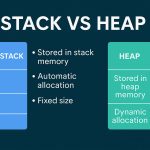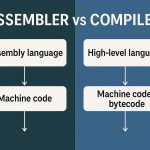Description
An instance in computer science refers to a specific, concrete occurrence of any object, entity, or structure in memory during a program’s execution. Most commonly, the term is used in object-oriented programming (OOP), where an instance is an individual object created from a class blueprint. Each instance contains its own data and can operate independently of other instances of the same class.
Instances are foundational to building scalable and modular applications. They allow programmers to work with multiple objects of the same type, each with unique states and behavior, while sharing a common interface defined by the class.
Instance in Object-Oriented Programming
What Is a Class vs. an Instance?
- Class: A blueprint or template for creating objects
- Instance: A real, tangible object created from that blueprint
Python Example:
class Dog:
def __init__(self, name):
self.name = name
my_dog = Dog("Buddy") # my_dog is an instance of class DogJava Example:
public class Car {
String model;
Car(String modelName) {
model = modelName;
}
}
Car myCar = new Car("Tesla"); // myCar is an instanceMemory and Instance Allocation
When an instance is created, memory is allocated for its attributes (data members), and potentially methods if dynamic binding or runtime polymorphism is used.
- Stack memory may store references to instances
- Heap memory stores actual object data
Unique Properties per Instance
Each instance holds its own copy of data members.
class Circle:
def __init__(self, radius):
self.radius = radius
c1 = Circle(5)
c2 = Circle(10)
print(c1.radius) # Outputs 5
print(c2.radius) # Outputs 10Instance Methods
Defined inside a class and called on an instance.
class Dog:
def bark(self):
print("Woof!")
d = Dog()
d.bark() # Calling an instance methodInstance vs Static
| Feature | Instance | Static |
|---|---|---|
| Associated With | Object | Class |
| Access | Requires object (e.g., obj.method) | Direct (e.g., Class.method()) |
| Memory | Per object | Shared across all instances |
Instance Variables vs Class Variables
Python Example:
class Sample:
class_var = 0 # class variable
def __init__(self, x):
self.instance_var = xclass_varis sharedinstance_varis unique to each object
Instances in Other Paradigms
- Functional Programming: Instances may appear as instantiations of closures or data structures.
- Database Systems: A row (or record) in a table is an instance of the table schema.
- Operating Systems: A process or thread may be called an instance of a program.
Instance in Databases
In databases, an instance refers to:
- A record in a table (e.g., one customer)
- A running database process (e.g., a PostgreSQL server instance)
Instance Lifecycle
- Instantiation: Creating an instance from a class.
- Usage: Invoking methods, accessing properties.
- Garbage Collection: Instance is deleted or dereferenced when no longer used.
Instance Checking
Python
isinstance(obj, MyClass)Java
obj instanceof MyClassBest Practices
- Keep instance data encapsulated
- Use constructors to ensure valid state
- Avoid unnecessary instantiation (memory efficiency)
- Use class/static methods when instance state isn’t required
Summary
An instance is a concrete realization of a class or schema, allowing for modular, reusable, and independent representations of objects in software. From OOP to databases, understanding instances is key to building maintainable and scalable systems. Each instance embodies the characteristics of its class while retaining its own unique identity and behavior during a program’s execution.









